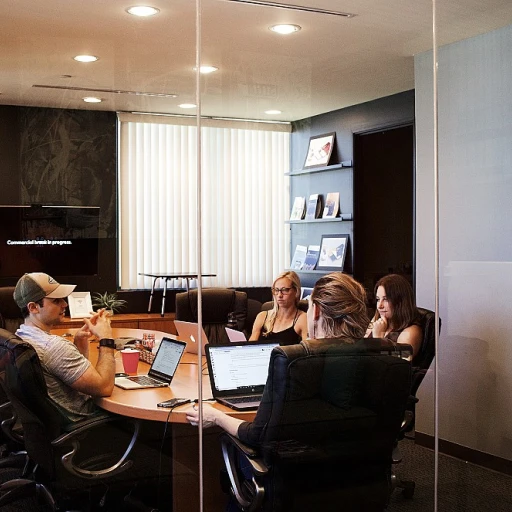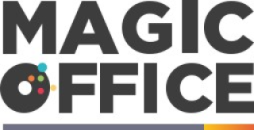
Understanding Leadership Vision
Grasping the Bigger Picture
To truly engage with senior leaders, understanding their vision is crucial. Seeking clarity on the long-term goals and strategies of the organization will help you align your office management tasks with the overarching objectives. When selecting strategic decisions or planning significant changes, consider asking questions such as:
- What are the key goals our leaders want to accomplish this quarter or year?
- How do these goals align with our company's long-term strategy?
- What leadership styles have proven effective in steering the organization towards its objectives?
- Which industry trends influence our leadership's vision for the future?
Posing these questions fosters a comprehensive view of the company's ambition, providing insight into how your team can support these initiatives. Moreover, exploring the leadership vision paves the way for smooth navigation through organisational changes, ensuring resources are appropriately allocated and budgets effectively managed. This foundation not only builds a robust company culture but also enhances communication channels and strengthens collaborative efforts across teams.
For an in-depth understanding of leadership strategies and how they impact office management, explore our detailed guide on enhancing property management efficiency with Excel. This will further enhance your insight into effective resource management and strategic planning.
Navigating Organisational Changes
Recognizing the Challenges of Change
In any organization, the inevitability of change presents numerous challenges, especially when adapting to an evolving industry landscape or implementing a strategic vision. Senior leaders often grapple with decisions that might redefine the core aspects of the business. Building an understanding with these leaders can provide insights into how such changes might impact the organization. To initiate meaningful conversations, consider the following key questions that can help uncover the strategic priorities surrounding organizational shifts:- How do you foresee our company's strategy evolving over the next three to five years?
- What are the most significant challenges you anticipate facing during this period of transition?
- In what ways can our team assist in fostering a culture that embraces change?
Enhancing Communication Channels
Improving Interaction Within the Team
Effective communication with senior leaders is essential for the success of any organization. It helps in aligning the goals of an office management team with the broader strategic objectives of the company. Open dialogues make it easier to understand the leadership’s vision and the company's long-term goals.
Engage in regular discussions with senior executives to explore the best approaches to enhance communication channels. Initiate conversations with decision makers about current challenges and industry trends that could impact the team’s performance. This not only aids in clear and effective communication but also helps in building a culture of employee engagement.
Asking the right questions can significantly improve mutual understanding and collaboration. Consider the following:
- “What are the primary communication challenges you see within our organization?”
- “How do you think our current communication methods align with our strategic goals?”
- “Are there any recent digital transformation initiatives that we should consider?”
These questions help to uncover insights that improve communication strategies. Enhancing communication channels will help in overcoming barriers and contribute to achieving business success.
For more insights, consider exploring how efficient management of resources such as financial oversight can further aid in improving communication and workflow.
Resource Allocation and Budgeting
Optimal Allocation for Maximum Impact
Resource allocation is a pivotal component that significantly influences the success of any organization. As an office manager, understanding how resources are distributed will help you align with the strategic goals set by senior leaders.
Begin by engaging with senior leaders to comprehend their overarching aspirations and the long-term vision for the business. This understanding will guide you in identifying which resources are critical and where they should be directed to support those visions.
Consider the following questions to engage effectively with senior leaders on resource allocation:
- What are the strategic priorities for our company in the next quarter?
- How do we ensure that our resource distribution aligns with these priorities?
- What challenges might we face in reallocating resources, and how can we address them?
- How can we encourage problem solving and innovation within our team to optimize resources?
By posing these questions, you foster open communication and demonstrate a proactive approach. It also aids in problem-solving by highlighting potential bottlenecks and providing the opportunity to propose solutions.
Furthermore, senior executives often appreciate when their team members exhibit an understanding of the broader business strategy. It’s essential to stay informed about industry trends and the company's evolving needs. This awareness helps in making informed decisions that bolster both employee engagement and company culture.
Ultimately, the strategic allocation of resources will not only support immediate objectives but also build a resilient foundation for future challenges. By aligning your resource management strategies to the organization's long-term goals, you create an environment where both leadership and team members thrive.
Fostering a Positive Work Culture
Promoting a Culture of Positivity and Engagement
Creating a positive work culture is pivotal in fostering employee loyalty and boosting productivity. In today's rapidly changing business environment, senior leaders face the challenge of maintaining morale and engagement within their teams. Understanding the strategic objectives of the company and aligning them with a supportive work culture can significantly contribute to long-term success. Start by asking insightful questions that explore the core values and goals of senior leaders, aiming to understand their vision for a collaborative culture. This understanding will help in aligning the leadership style with the organisational culture, ensuring that every team member feels valued and engaged. Consider these strategies for fostering positivity in the workplace:- Inclusive Leadership: Encourage leaders to be approachable and open to ideas from all team members. This inclusivity promotes a sense of belonging and can fuel innovation and adaptability.
- Recognition of Achievements: Regularly celebrate both individual and team accomplishments. Recognising hard work not only boosts morale but also reinforces desirable behaviours that align with the organisation's goals.
- Transparent Communication: Open and honest dialogue is critical for establishing trust and understanding among staff. Through continuous dialogue, leaders can address potential challenges and foster a culture of transparency and openness.
- Empowering Decision-Making: Offer team members autonomy in their roles and responsibilities. Empowerment leads to more effective problem solving and decision making, driving the company towards its strategic objectives.
Professional Development Opportunities
Investing in Growth and Skills
Professional development is a cornerstone of any thriving organization. Engaging with senior leaders to understand their vision for the company's growth can help align your team's skills with long-term goals. This alignment not only supports the strategic direction of the business but also fosters a culture of continuous improvement and learning.
When discussing professional development opportunities with senior leaders, consider these strategic questions:
- What skills are essential for our team members to meet future challenges?
- How can we integrate digital transformation into our training programs?
- What role does leadership style play in employee engagement and development?
- How can we ensure that our professional development initiatives align with the company's strategic goals?
These questions help in understanding the broader organizational strategy and ensure that the development programs are not just reactive but proactive in addressing future needs. By fostering a positive work culture through professional growth, you contribute to the overall success of the company.
Moreover, navigating organizational changes effectively requires a well-prepared team. By investing in professional development, you equip your team to handle transitions smoothly, supporting both the immediate and long-term objectives of the organization.













